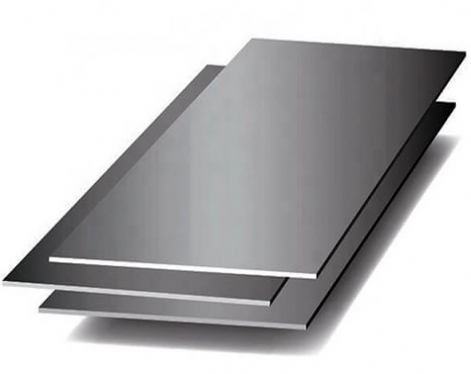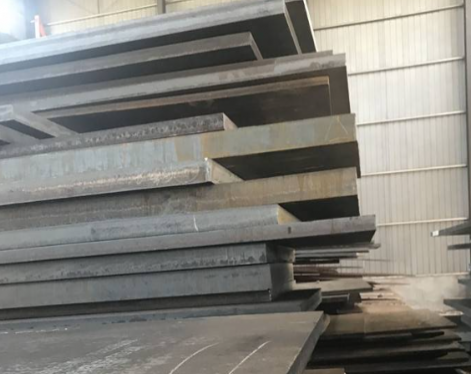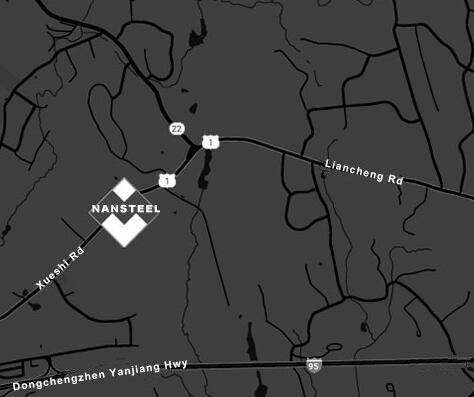Carbon steel plate (carbon content <2.11%, no specific alloying elements added) contains carbon and small amounts of sulfur, silicon, phosphorus, and manganese. This type of steel plate can be categorized into low-carbon steel, medium-carbon steel, and high-carbon steel, each with distinct performance characteristics. Low-carbon steel offers excellent toughness and is used for casings and containers; medium-carbon steel, with its balanced properties, is used for shafts and gears; and high-carbon steel is hard and wear-resistant, making it suitable for cutting tools and molds.
Galvanized steel plates are coated with zinc to prevent corrosion and extend their lifespan. They are categorized into hot-dip galvanizing and electro-galvanizing. Hot-dip galvanized steel plates have a thicker zinc layer and are more corrosion-resistant, making them suitable for applications in the construction and automotive sectors. Electro-galvanized steel plates, on the other hand, offer a more uniform coating and a superior surface finish, making them suitable for the home appliance and electronics industries.
Performance comparison
1. The strength of carbon steel plates is positively correlated with their carbon content. The higher the carbon content, the stronger the strength. For example, high-carbon steel has extremely high strength and is suitable for making tools such as knives and molds that have high strength requirements. Galvanized steel plates are slightly lower in strength than carbon steel plates of the same specifications due to the galvanized surface. However, their strength is completely sufficient in scenarios where strength requirements are not high and corrosion protection is more needed.
2. Low carbon steel plates have good toughness, can deform to absorb energy and prevent fracture when impacted, and are suitable for scenarios such as automobile shells. The toughness of galvanized steel plates is affected by the process and the thickness of the zinc layer. The performance meets the standards in conventional applications, and the flexibility may decrease only when the zinc layer is too thick.

3. Galvanized steel plates have outstanding corrosion resistance, and the zinc layer can isolate corrosive substances, making them suitable for outdoor construction scenes; carbon steel plates have weak corrosion resistance and are prone to rust in harsh environments. They require additional surface protection, and their protective effect and durability are not as good as galvanized steel plates.
4. Carbon steel plates have good machinability and can be easily made into complex parts through processes such as stamping and bending, making them suitable for multiple industrial fields. Galvanized steel plates can be processed conventionally without any pressure. You only need to pay attention to protecting the zinc layer (such as choosing a smooth mold for stamping) to avoid damage to the zinc layer and reducing corrosion resistance.
5. Carbon steel plates are easy to weld and can be welded using conventional methods (such as manual arc welding). Galvanized steel plates are difficult to weld because the melting and evaporation of the zinc layer will cause smoke and pores, requiring special measures (such as removing the zinc layer at the groove and selecting appropriate welding materials) to ensure welding quality.
Which one should you choose?
The decision between carbon steel plate vs galvanized steel plate largely depends on your project requirements.
If your project demands high strength and heavy load-bearing capacity, such as bridges, offshore platforms, or heavy industrial machinery, then carbon steel plate is the better choice.
If your project requires long-term corrosion protection with minimal maintenance, such as outdoor roofing, fencing, or water infrastructure, then galvanized steel plate offers the best value.
In some cases, both materials are used together—carbon steel provides structural strength, while galvanization or additional coatings are applied for corrosion resistance.
Read more: The Difference between Stainless Steel Plates and Galvanized Steel Plates
Galvanized steel plates are coated with zinc to prevent corrosion and extend their lifespan. They are categorized into hot-dip galvanizing and electro-galvanizing. Hot-dip galvanized steel plates have a thicker zinc layer and are more corrosion-resistant, making them suitable for applications in the construction and automotive sectors. Electro-galvanized steel plates, on the other hand, offer a more uniform coating and a superior surface finish, making them suitable for the home appliance and electronics industries.
Performance comparison
1. The strength of carbon steel plates is positively correlated with their carbon content. The higher the carbon content, the stronger the strength. For example, high-carbon steel has extremely high strength and is suitable for making tools such as knives and molds that have high strength requirements. Galvanized steel plates are slightly lower in strength than carbon steel plates of the same specifications due to the galvanized surface. However, their strength is completely sufficient in scenarios where strength requirements are not high and corrosion protection is more needed.
2. Low carbon steel plates have good toughness, can deform to absorb energy and prevent fracture when impacted, and are suitable for scenarios such as automobile shells. The toughness of galvanized steel plates is affected by the process and the thickness of the zinc layer. The performance meets the standards in conventional applications, and the flexibility may decrease only when the zinc layer is too thick.

3. Galvanized steel plates have outstanding corrosion resistance, and the zinc layer can isolate corrosive substances, making them suitable for outdoor construction scenes; carbon steel plates have weak corrosion resistance and are prone to rust in harsh environments. They require additional surface protection, and their protective effect and durability are not as good as galvanized steel plates.
4. Carbon steel plates have good machinability and can be easily made into complex parts through processes such as stamping and bending, making them suitable for multiple industrial fields. Galvanized steel plates can be processed conventionally without any pressure. You only need to pay attention to protecting the zinc layer (such as choosing a smooth mold for stamping) to avoid damage to the zinc layer and reducing corrosion resistance.
5. Carbon steel plates are easy to weld and can be welded using conventional methods (such as manual arc welding). Galvanized steel plates are difficult to weld because the melting and evaporation of the zinc layer will cause smoke and pores, requiring special measures (such as removing the zinc layer at the groove and selecting appropriate welding materials) to ensure welding quality.
Which one should you choose?
The decision between carbon steel plate vs galvanized steel plate largely depends on your project requirements.
If your project demands high strength and heavy load-bearing capacity, such as bridges, offshore platforms, or heavy industrial machinery, then carbon steel plate is the better choice.
If your project requires long-term corrosion protection with minimal maintenance, such as outdoor roofing, fencing, or water infrastructure, then galvanized steel plate offers the best value.
In some cases, both materials are used together—carbon steel provides structural strength, while galvanization or additional coatings are applied for corrosion resistance.
Read more: The Difference between Stainless Steel Plates and Galvanized Steel Plates









